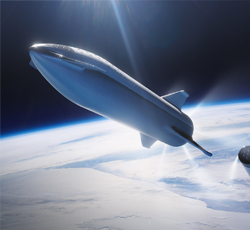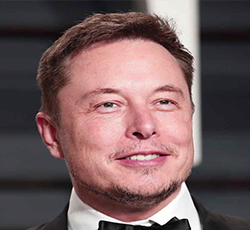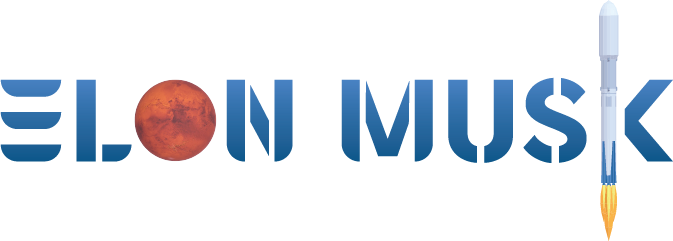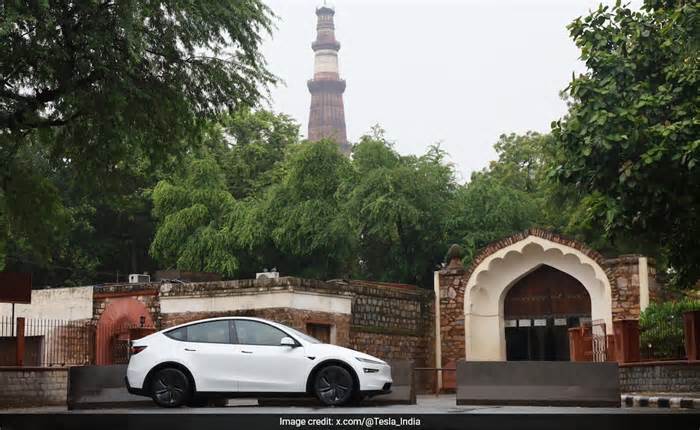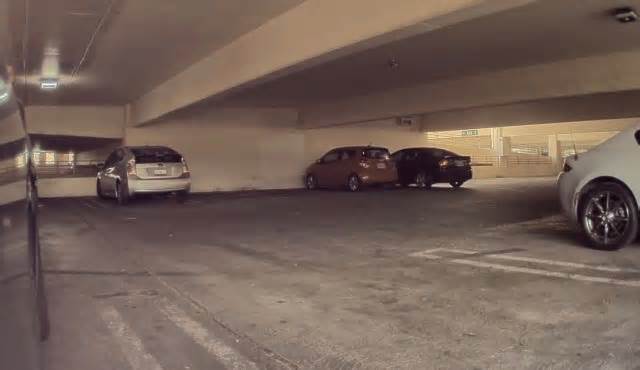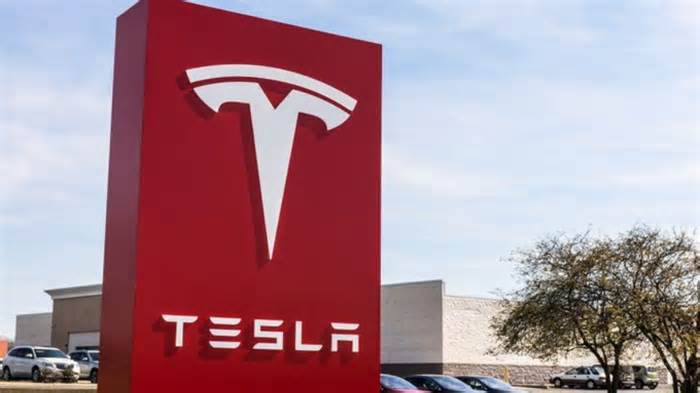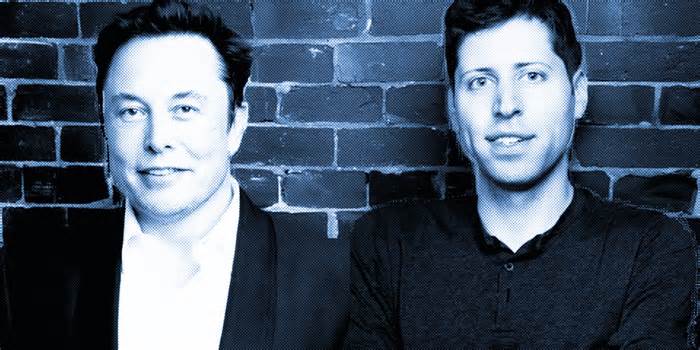
Chinese EV Giant BYD Plans Major Saudi Push After Tesla’s Debut
- by TechStory
- Jul 14, 2025
- 0 Comments
- 0 Likes Flag 0 Of 5
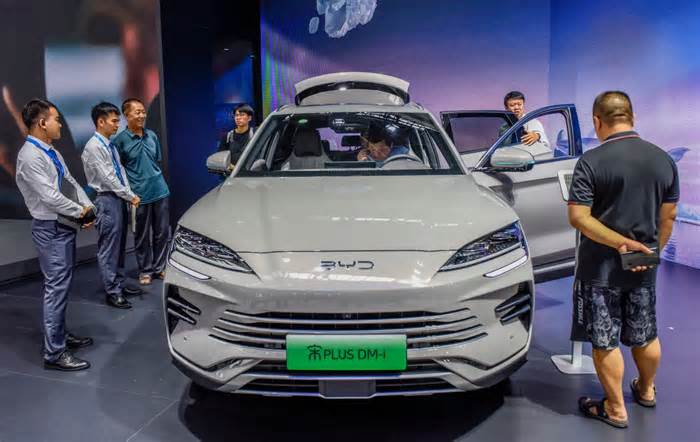
Linkedin
Chinese electric vehicle (EV) leader BYD Co. Ltd. is accelerating its expansion in Saudi Arabia, just months after Tesla made its debut in the Kingdom. With ambitious showroom growth, strong sales targets, and alignment with Saudi strategic goals, BYD is positioning itself as a top contender in the burgeoning Gulf EV market.
You might also like Leaked: iPhone 17 Prices in India, US, and UAE — Model-wise Details Inside
BYD entered the Saudi market in February 2024 and launched its first Riyadh showroom by May of that year. Currently, it operates three showrooms and has announced plans to expand to ten across the Kingdom by the second half of 2026.
Jerome Saigot, BYD’s Managing Director for Saudi Arabia, emphasized the need for aggressive market coverage:
“Saudi [Arabia] is a complex market. You need to go fast. You need to think big. We are not here to stay at five or ten thousand cars a year”
This heavy footprint in a low-penetration market where EVs accounted for just 1% of new car sales in 2024 demonstrates BYD’s commitment to cementing a first-mover advantage.
Steep Sales Ambitions
For 2025, BYD is targeting over 5,000 vehicle sales in Saudi Arabia—an ambitious jump from its 2024 baseline. While that figure may seem modest, it represents more than 100% growth year-over-year . This accelerating momentum is fueled not only by BYD’s expanding local infrastructure but also indirectly by Tesla’s market entry, which is growing consumer awareness of EVs.
BYD’s lower-priced models such as the Atto 3 provide compelling alternatives to Tesla’s premium offerings. The Atto 3, for example, starts at around $30,000, compared to Tesla’s $45,000+ offerings . This affordability combined with quality positions BYD strategically in a cost-conscious market.
On the global stage, BYD’s dominance is clear: it sold 4.27 million units in 2024, more than twice Tesla’s output of 1.62 million for the same period.
Alignment with Saudi Vision 2030
BYD’s aggressive expansion dovetails with Saudi Arabia’s broader Vision 2030 agenda, which seeks to diversify the economy and reduce dependence on oil. The Kingdom has set ambitious goals, targeting 30% EV adoption by 2030, backed by public initiatives that include funding and infrastructure development.
The Public Investment Fund (PIF) is heavily involved in building EV infrastructure and enhancing domestic manufacturing through partnerships such as Lucid and Ceer. Additionally, Saudi Aramco has teamed up with BYD to research innovative new energy vehicle technologies—a sign of long-term strategic collaboration .
Beyond Vehicles: Massive Battery Storage Projects
BYD’s investment in Saudi Arabia extends beyond cars. The company is a key player in grid-scale battery storage, delivering a 2.6 GWh system in Bisha and securing 12.5 GWh of contracts with Saudi Electricity Company—totaling a record 15.1 GWh of capacity.
This energy infrastructure initiative supports Saudi’s goal to generate 50% of electricity from renewables by 2030. Investors and the Saudi government recognize that advanced storage systems are vital to integrate solar and wind power into the grid, which can otherwise be unstable due to intermittency .
Tesla’s arrival in April 2025 provided a boost to BYD by raising EV awareness among consumers. However, the startup faces environmental hurdles: the desert climate can degrade battery life, and charging infrastructure remains sparse only about 101 fast-charging stations exist nationwide.
While BYD benefits from affordable hybrid solutions, accounting for approximately 70% of its Saudi sales widespread full-EV adoption is still limited by these practical constraints .
To address these gaps, the government and private sectors are investing heavily in infrastructure: plans call for 5,000 chargers by 2030, and PIF is backing companies like Ceer to build local assembly plants.
In U.S. equity markets, BYD’s ADR (BYDDF) has surged about 36% year-to-date, while Tesla shares have declined roughly 22% over the same period. This divergence reflects investor confidence in BYD’s real-world operational success and cost-effective product positioning compared to Tesla’s premium brand valuation.
Analysts highlight BYD’s lower price-to-sales ratio (~1.2x vs. Tesla’s ~2.5x), suggesting BYD offers a more attractive fundamental value—especially given its execution in emerging markets like Saudi Arabia.
BYD’s strategy in Saudi Arabia encompasses:
Rapid retail rollout (10 showrooms by 2026)
Strong yearly growth targets (> 5,000 units in 2025)
Diversified footprint through partnerships, grid storage
Alignment with national infrastructure and climate goals
Despite facing infrastructure limitations and environmental challenges, the alignment with Vision 2030, government investment, and Tesla-driven consumer interest create a fertile environment for BYD’s growth. The company is well-positioned to capture 10‑15% of the EV market by 2030, a multi-billion-dollar opportunity.
Please first to comment
Related Post
Stay Connected
Tweets by elonmuskTo get the latest tweets please make sure you are logged in on X on this browser.
Sponsored
Popular Post
Sam Altman's OpenAI Takes On Elon Musk's Grok in AI Chess Tournament Final - Who Won?
28 ViewsAug 09 ,2025






 Energy
Energy